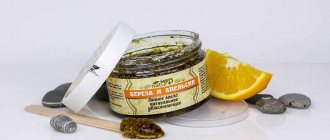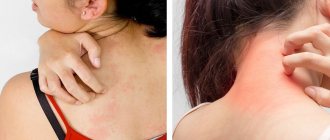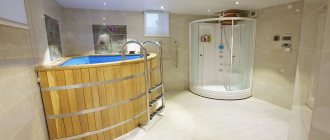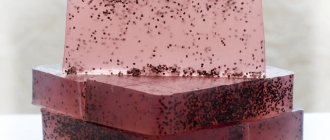Many different products are used for hygiene. One of the most common is bath soap. It is advisable to purchase products made from natural and environmentally friendly ingredients. In modern stores you can find many types of soap, including bath soap. First, you should know about their medicinal properties and benefits.
There are different types of soap that differ in purpose. Among them are medical, bath, toilet, and household. Products are prepared from various components: sodium salts, water, palm oil, antioxidants, additives. But in any case, the product is used for hygiene.
Benefits of bath soap
The product is great for bathing and hair washing. Its advantages include:
- the presence of natural components: herbs, essential and plant extracts;
- antibacterial effect, which is necessary for cleansing oily and problematic skin;
- Bath soap is used for hair because it makes it strong and thick;
- The product is suitable for all skin types, and since it contains vegetable oils, it does not have a drying effect.
Soap can be purchased at any store or you can create it yourself. The product can replace gel, but at a much lower price. Thanks to the large assortment, you can choose the right products for any skin type.
Bath soap “Granny Agafya” is considered one of the most common. It is used for bathing and washing hair. The popularity of the product is explained by the use of natural ingredients. The advantages of the product include:
- pleasant aroma;
- high-quality hair and skin cleansing;
- has a uniform consistency;
- suitable instead of shampoo;
- affordable price.
How to make your own soap
This beauty makes me want to try it
Homemade bath soap is not only a natural and environmentally friendly product, but also an opportunity to bring your ideas and fantasies to life. The process of soap making is very addictive and often develops from a simple hobby into something more, bringing significant income to the family budget.
Required Ingredients
Beginner soap maker's kit
- The basis. White or transparent soap base is freely sold in specialized stores. You can also use ordinary baby soap as a basis (for those who are trying to make soap for the first time, it is better to use it);
Photo of transparent soap base
- Base oil - this can be absolutely any oil: peach, olive, apricot, depending on your preferences;
- Essential oil – here you need to clearly determine for what purpose the final result will be used. To try to get rid of cellulite, orange oil is ideal; tea oil will cleanse oily problem skin;
Professional soap makers have entire collections of essential oils
- Dyes – food or special. Here you can save money and use natural products: coffee, juice, chocolate, etc.;
- Other additives. They are introduced into the composition to give the soap a certain property. To make scrub soap, use oatmeal or ground coffee; for extra velvety skin after washing - honey or cream;
- Molds for pouring soap.
Advice! If you are new to soap making, use regular children's molds that are played in the sandbox, this way you will make your first experience cheaper. Well, if you start cooking seriously, it’s better to fork out for special forms that are more practical and varied in configuration.
- Water bath container;
- A decoction of medicinal herbs, warm milk or plain water for diluting the base;
- Alcohol or vodka for lubricating the surfaces of the molds;
- Fantasy.
Stages of work
The instructions for making soap are simple, however, in order for the final result to be satisfying, you need to carefully follow the technology.
- Soap base or a piece of baby soap is cut into small pieces or grated on a coarse grater;
- In a water bath, melt the resulting shavings or pieces, adding base oil at the rate of 3 teaspoons per 100 g;
- While the base is heating, add cream or milk (just a little) until a sour cream-like mass is obtained. You can replace the liquid with sugar, this will make the base melt better and faster;
Instead of milk, you can add water, but if you do it incorrectly, the base will separate.
- When the soap base is completely melted, it's time to add the ingredients:
- — essential oil – 5 drops;
- - glycerin - a teaspoon;
- - dyes, flavors - to taste, but within reasonable limits;
- - various additives - at the discretion of the creator (here there is an opportunity to fully satisfy your ambitions as an artist and perfumer combined);
- Pour the warm liquid soap into the mold. Be sure to spray the surface with alcohol (as a last resort) and vodka - this will eliminate the appearance of air bubbles;
- The soap cools and hardens for 2-3 days. To speed up the process, you can put it in the refrigerator;
- Carefully remove the bath soap from the mold and voila! it's ready to use!
Handmade bath soap
Natural Siberian
This bath soap from Grandmother Agafya has a green-black color, as well as healing properties. When bathing, it forms excellent foam and moisturizes the skin. And thanks to the pleasant woody-herbal aroma it makes the procedure unforgettable.
Why do many people choose this particular product? The products are valued for their inclusion of rare plants, enriched with many vitamins and microelements. This composition is beneficial for skin and hair. Siberian soap is created from 37 herbs.
What is liquid soap made from?
Liquid soap is most often prepared on the basis of surfactants (sodium laureth sulfate and the like) or liquid soap obtained by dissolving mixed vegetable oils in potassium alkali. The first type has a much more favorable price, but greatly irritates the lipid layer of the skin and is harmful to the environment. But its acidity is close enough to neutral so as not to dry out the skin. The convenience of using dispenser bottles has found widespread use in public places, but liquid soap is more prone to the accumulation of pathogens than bar soap. Bacteria are too unstable on alkaline surfaces,
To make a choice between different types of soap: laundry, tar, baby, bath, toilet and antibacterial, you need to study what they consist of, the properties of all the ingredients and their benefits. This is a choice between convenience and naturalness, environmental friendliness and savings.
Please rate how useful this article was to you! (No ratings yet)
Yandex recommends - the best articles on the site
You may also be interested in
- 10 very tasty and simple marinated recipes...
- Life hack: how to remove stains from green paint with white and...
- Instructions: how to remove the smell of cat urine from the floor in an apartment
- Top 15 Best Baby Powders for Newborns
- 13 products that can replace washing...
- Instructions: how to erase a pen from wallpaper without leaving marks in...
- Eggs burst during cooking, what should I do? How right...
- Lifehack: How to remove brilliant green from furniture
- Instructions: how to clean a silicone baking dish...
- What is a saucepan and what is it for?
- Top 20 products to remove burnt marks from your iron...
- Instructions: how and with what to quickly remove iodine stains with…
Peppermint Soap
Bath soap from Grandmother Agafya has a white base, which consists of olive oil and natural mint. The product is ideal for dry and oily skin and gently cleanses it. It is used to whiten age spots and even out skin color.
Soap includes:
- olive base;
- avocado oil;
- shea butter
This composition is needed to eliminate dry skin, as well as saturate it with vitamins A and E. The oil is enriched with natural loofah, which effectively eliminates dead cells. The functions of the component include oxygen saturation and restoration of blood circulation.
African black soap
This solid soap is made exclusively from plant ingredients. The main components of the product are the ash of banana, palm, plantain, and cocoa bark leaves. And the binding component is vegetable oils: palm, coconut, olive, shea butter and so on...
In the production of African black soap there is no single standard; different components of plant components and different oils can be used.
The production technology is simple to perfection - the leaves and bark are burned. The resulting ash is the basis of future soap.
Cooled ash is added to the water, filtered, and oils are added to the filtered solution and stirred continuously throughout the day. The resulting mixture is infused for two to three weeks.
By adding certain components to the soap, manufacturers have improved production technology. Therefore, African black soap can be purchased in solid briquettes and in liquid form.
With the simplest production (adding oils to ash and aging), the soap turns out to have a viscous texture, like thick and dried Shrovetide clay.
Soap "Honey"
Bath soap from Grandmother Agafya has a top layer of 100% honey, and a bottom layer of organic base (coconut and palm oil). The product has an excellent tonic effect. It is used to eliminate cellulite, since it contains ground coffee and honey. The components improve cellular metabolism and restore blood microcirculation.
The product is enriched with natural loofah and wheat germ oil. The components are needed for soft and silky skin. As an addition, you can perform a body scrub that uses honey and salt.
Laundry soap
Soap was invented almost 200 years ago, and since then the composition has remained almost unchanged. Another name is “sodium soap”. During production, caustic soda is used as an alkali. The recipe complies with GOST. Soap is made from vegetable and animal fats (pork, fish, beef). Contains more alkalis and acids than bath and toilet products.
Has the following characteristics:
- brown tint - from dark to dull yellow - depends on the degree of purification,
- square bars of 180-200g with embossed numbers that show the fatty acid content (from 65% to 74%,
- rough surface.
Widely used in laundry, washing various surfaces, as a hand detergent when carrying out household work.
Effectively removes stains and whitens. It has an antimicrobial effect and prevents the development of fungal diseases. Among the disadvantages, one can note a specific smell; with prolonged use, it dries out the skin. Not recommended for sensitive and allergy-prone skin.
Bathhouse "White"
Bath soap from “Granny Agafya” has the consistency of a cream soufflé, resulting in strong foam. The product has a pleasant aroma and excellent effect on the skin. During the procedure, the skin and hair are thoroughly cleansed.
It contains extracts of 37 herbs that are needed to rejuvenate the skin and make it smooth. The product includes nutmeg extract, goat milk, oils and white willow extract.
What kind of soap is there?
- Medical. Contains antimicrobial or medicinal additives. For example, antibacterial or to treat dandruff.
- Toilet. For frequent use. Consists of fatty acids and sodium salts.
- Bathhouse. Designed for washing well-warmed skin. Cleanses and nourishes well. Can be used to wash hair. Contains natural beneficial ingredients, such as herbal extracts, chaga, tar.
- Economic. Contains alkali, which removes most contaminants, and an antiseptic for an antimicrobial effect.
Stages of bath soap production.
Saponification. Interaction at high temperatures between fat and alkali (sodium hydroxide). The result is a glue-like mass that quickly hardens when cooled. Consists mainly of glycerin and unrefined soap.
Relaxation. Treating the soap solution with a strong alkali, such as sodium chloride. As a result, a persistent substance is formed that has a harder consistency. It is better stored, does not go rancid and is easily transported.
Hygienic products “Rainbow Smile”
Bath soap, reviews of which contain many positive responses, can be bought in almost every store. The manufacturer produces several types of products:
- white with cedar essential oils;
- green with juniper oil;
- black with birch tar and eucalyptus oil;
- brown with kvass soup;
- orange with orange oil.
The product contains no artificial flavors or parabens. Any of these soaps gently cleanses the skin while providing an antioxidant effect.
A little history
Soap in its familiar form appeared relatively recently. In the old days, sand and ash were used to cleanse the body. In Ancient Egypt, they used beeswax paste diluted with herbal infusions. But such a composition was affordable only for wealthy citizens. The prototype of modern soap was developed in Italy in 1424.
And although today they produce a wide variety of types of products, our grandmothers still used standard soap bars. Now anyone can purchase soap according to their taste: solid, paste, liquid, with the addition of scrub and cream. At the same time, many manufacturers are striving to return to the roots, producing soap with the maximum content of natural substances.
Home remedy
You can make your own toilet bath soap using a simple recipe. This product is usually made from goat milk, silk and shea butter. Little neroli is used as a mandatory component. There are different methods for preparing the product, but the recipe for bath soap with goat milk is considered the most useful.
After using this soap, the skin becomes smooth, fatigue and irritation are eliminated. What are the advantages of the product? It lies in the healing effect of sour milk, which women began to use a long time ago. The product was used to create masks for the face and hair. It served as a component for the creation of cosmetic care products. Goat's milk contains more casein than cow's milk, which is why the product has a positive effect on the skin.
You can use the following cooking recipe, and then the finished product will be completely natural. To create the product you will need baby soap, olive oil, eucalyptus extract, horsetail, boiled water, eucalyptus leaves.
Horsetail (1.5 tbsp) must be poured with boiling water (100 ml). The product should sit for half an hour. Baby soap needs to be grated and melted. Eucalyptus leaves (about 50 g) are rubbed into powder. The horsetail decoction should be divided into 2 parts, one of which is mixed with soap shavings. Olive oil (2 tbsp) is added to this composition, and the components must be thoroughly mixed, including the second part. Finally, grated leaves and eucalyptus extract are added.
The finished product should be poured into a convenient container, wrapped in cling film, and can be left for a week in a dry place. Then such a product is ready for hygiene procedures. The soap is great for oily and problem skin. Eucalyptus helps quickly eliminate breakouts and tighten pores. Soap is ideal for face, body, hair. It can be used to treat dandruff.
What is antibacterial soap made from?
Bacteria multiply much more strongly on wet skin, which is why antibacterial soap contains deodorizing agents. They are able to control body odor by inhibiting sweating. It can be either liquid or in the form of a bar. In addition, they can also use other active antimicrobial compounds. Well suited for periodic hand treatment in places where strict hygiene rules are required (hospitals, canteens).
However, with daily use it has the opposite effect, when the skin loses its protective film (beneficial bacteria), quickly dries out and becomes susceptible to cracking, which is fraught with various infections. In addition, there is a false sense of sterility, which is why many do not sanitize thoroughly enough or do not follow the necessary hygiene rules, touching their face more often and washing their hands less often.
The chemical composition of antibacterial soap can include up to 80% deionized or distilled water and about 1% hypochlorite, triclosan (phenoxyphenol) or triclocarban, which are effective against a wide range of microorganisms. According to studies, regular use causes the emergence of bacteria that are insensitive to antibiotics, which causes up to 700 thousand deaths worldwide each year due to drug resistance. Alas, this figure could increase another 10-15 times if we do not pay attention to this problem until 2050.
Features of choice
There are many products sold in stores. To choose the right soap, you need to consider the following factors:
- Best before date. If the product consists of natural ingredients, then after the expiration date it may deteriorate. After this, you should not use it, as it can cause allergies and other skin ailments.
- Compound. When purchasing, you should familiarize yourself with the included components. Bath soap, which includes glycerin, softens the skin and protects it from the effects of hard water. Alkaline components are necessary to eliminate acne. Essential oils and creams are needed for dry skin.
About pH
All chemicals that contain water molecules have their own pH. The reaction of the medium (pH) up to 7 is acidic, 7 is neutral, from 7 to 14 is alkaline.
Both soap and human skin have a pH, and each skin type has its own pH.
- Normal skin has a pH between 5.2 and 5.7
- Oily skin has a pH between 4 and 5.2
- In dry skin, this indicator ranges from 5.7 to 7
Chemistry is an exact science, there is no point in arguing with it. Our skin has an acidic environment, and the sweat and sebaceous glands influence its pH.
African black soap has a low pH - it is less than or equal to 7, that is, the soap’s environmental reaction indicator is neutral. This soap is perfect for any skin type, unlike ordinary varieties that have a pH of 9, 10, 10.5.
Differences between bath soap and regular soap
Bath soap is considered a universal product because it is used for skin and hair. It is used sparingly, which allows it to be used for a long time. Toilet soaps that do not contain herbal or fruit additives may contain alkaline ingredients. Therefore, the product serves to cleanse the skin, but does not moisturize or nourish it. For the bath, soap is used with the property of removing toxins, opening pores, and restoring blood circulation.
If you have difficulty choosing a soap, you should read the composition. Usually a bath product contains natural ingredients and herbs. This soap is suitable for steaming in a classic bath. Thanks to this procedure, you can cleanse pores and improve skin condition.
It is advisable to choose soap with different herbs and medicinal substances. They open pores, cleanse them, and restore blood circulation. The procedure will be pleasant and useful. Eucalyptus, pine needles, juniper, mint, and lavender have a beneficial effect. This product is great for daily hygiene procedures.
What is important to remember
Black soap is a product unique in its properties and benefits.
However, when choosing it as your main skincare product, it is very important to remember a number of rules:
- You should not use soap to completely replace shampoo. It is enough to use the composition 1-2 times a week. Otherwise, instead of the desired result, you will get dry hair and dandruff.
- Do not rub the soap into your skin for too long. The composition cleanses pores well, but it can dry out the epidermis. It is enough to massage the skin for 2-3 minutes, then rinse off the foam with water.
- Use foam to cleanse your skin. To do this, the soap is first foamed in your hands or using a special soft sponge or washcloth. This rule applies to both solid and gel soap.
- Remember that African soap is a concentrated product. That is why it should be used in moderation.
The product must be stored under the conditions described on the packaging. You should not leave bar soap in a bathhouse at high humidity, since as a result of such an oversight it may lose its shape and “go limp.”











